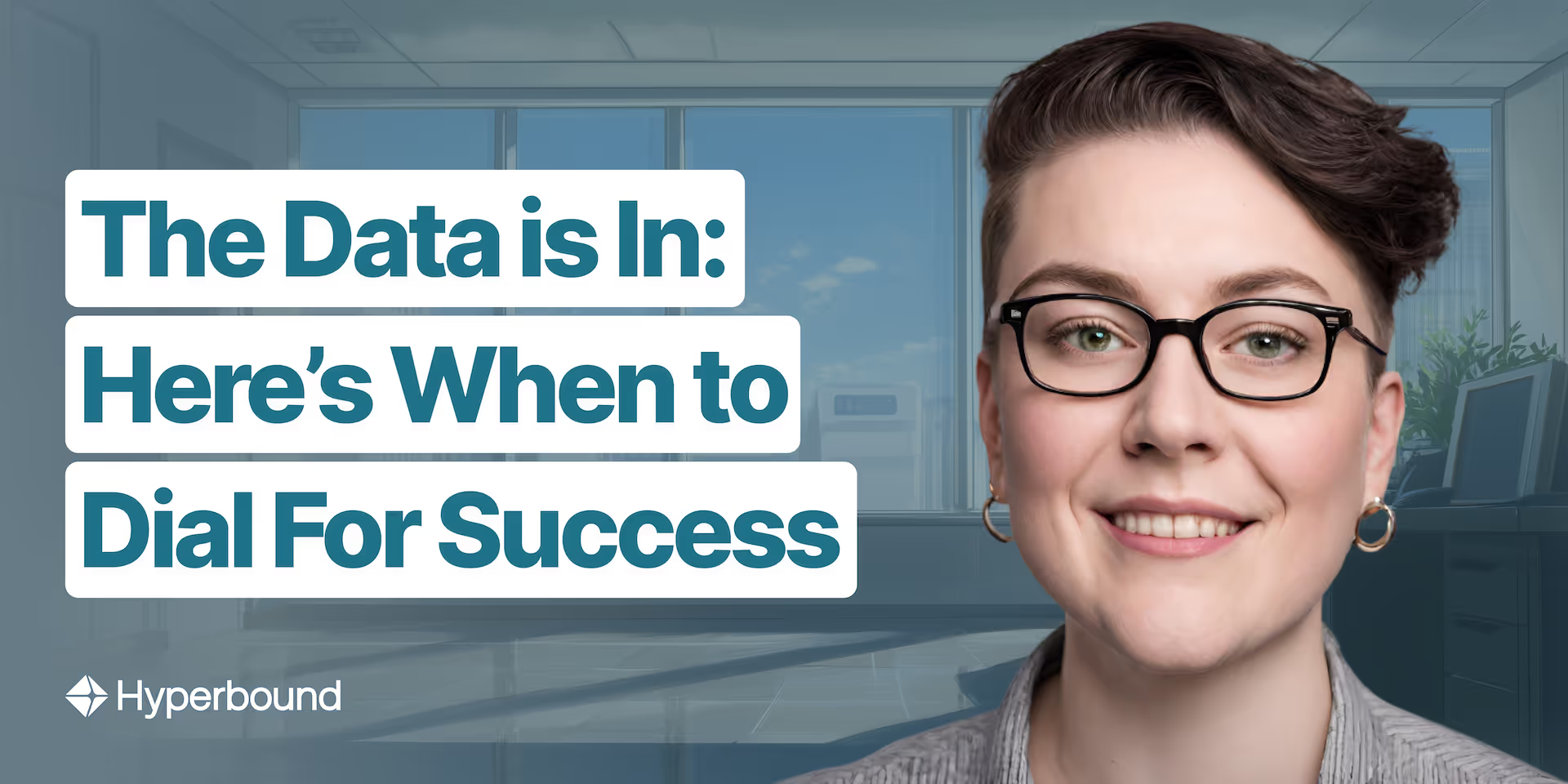
Understanding Cold Calling in Modern Sales
Timing is a critical yet often overlooked factor in cold calling success. In today's business landscape, reaching prospects when they're most receptive can dramatically improve your response rates and conversion rates. Research shows that properly timed phone calls can achieve connection rates up to 46% higher than poorly timed attempts.
The psychology behind prospect receptiveness varies throughout the day. Early mornings often find prospects planning their day, while late mornings typically offer a window when initial tasks are complete but energy levels remain high. Understanding these patterns helps your sales team maximize the effectiveness of their outreach efforts.
Types of Sales Calls: Cold vs. Warm Approaches
Different types of sales calls benefit from different timing strategies. Traditional cold calls—reaching out to prospects with no prior contact—generally require more strategic timing than follow-up calls with established connections.
Warm approaches, including follow-up calls after email exchanges or referrals, maintain higher success rates across more time slots. However, even these benefit from understanding optimal timing. The key is to adjust your approach based on where prospects sit in your sales cycle and their level of prior engagement.
Best Days to Cold Call: Data-Driven Insights
Analysis of over 1.4 million sales calls reveals clear patterns in cold calling effectiveness by day:
Wednesdays and Thursdays consistently show the highest answer rates, with success rates typically 5-10% higher than other weekdays. Tuesdays follow closely behind, particularly for initial outreach. Mondays and Fridays generally yield the lowest response rates, with Friday afternoons showing a steep drop-off in engagement as professionals mentally transition to weekend mode.
This mid-week effectiveness occurs because prospects have moved past Monday's catch-up activities but haven't yet shifted into weekend preparation. For your sales rep making cold calls, focusing efforts on these optimal days can significantly improve productivity.
Morning Cold Calling: Pros and Cons
Late mornings (10am-12pm) represent a prime calling window that many successful sales teams prioritize. By this time of day, prospects have typically handled urgent morning tasks but haven't yet transitioned to lunch. This time slot shows 15% higher connection rates compared to early morning calls.
The benefits of morning outreach include catching decision-makers before they become overwhelmed with the day's challenges and connecting when mental energy remains high. However, the worst times include the very early morning (8am-9am) when prospects are planning their day and aren't receptive to unexpected conversations.
Lunchtime Strategy: To Call or Not to Call
The lunch hour (12pm-1pm) presents a complex opportunity for sales calls. While conventional wisdom suggests avoiding this time, some sales teams report success during this window—particularly when targeting certain industries like professional services where decision-makers might have more flexible schedules.
If attempting lunchtime calls, respect for the prospect's time becomes even more critical. Successful sales reps often acknowledge the timing upfront: "I realize I might be catching you during lunch, would another time be more convenient?" This approach demonstrates awareness and builds goodwill even if the timing isn't ideal.
Afternoon Sweet Spots for Cold Calling
The late afternoon (4pm-5pm) offers another effective window that many overlook. Many decision-makers have completed their primary work for the day, potentially making them more receptive to phone calls. Some sales veterans refer to this as the "golden hour" for reaching senior executives.
Conversely, the immediate post-lunch period (1pm-2pm) typically shows lower response rates as many professionals experience an energy dip after eating. Understanding these afternoon patterns allows your sales team to focus their efforts during the most promising time of day for meaningful conversations.
Seasonal and Industry-Specific Timing Considerations
Timing effectiveness varies significantly by industry. B2B technology companies often see better response rates during late mornings, while financial services firms might find early morning outreach more effective as these professionals typically start their workday earlier.
Seasonal factors also impact cold calling success. Many B2B sales teams report lower response rates during summer vacation months and the December holiday season. Understanding your specific industry's business cycles helps adjust expectations and strategies accordingly.
Measuring Cold Call Success: Beyond Just Timing
While timing significantly impacts connection rates, successful sales teams measure multiple factors to optimize their calling strategy:
Connection rate: Percentage of calls that reach the intended recipientConversation rate: Percentage of connections that result in meaningful conversationsConversion rate: Percentage of conversations that advance to the next sales stage
By analyzing these metrics across different time slots, your sales team can identify patterns specific to your target audience and refine your approach for maximum impact.
Overcoming Common Time-Based Objections
Even with perfect timing, prospects will sometimes respond with "This isn't a good time." Successful sales reps are prepared with approaches like: "I understand. Would tomorrow at [specific time] work better? I only need about 10 minutes to share some specific insights about [relevant business challenge]."
This response acknowledges the interruption while offering a specific alternative and a clear value statement. The best sales teams prepare for timing objections as thoroughly as they prepare for product or service objections.
Creating Your Personalized Cold Calling Schedule
The most effective cold calling strategy combines industry best practices with your team's specific data:
- Start with generally effective time slots (late mornings and late afternoons mid-week)
- Track performance metrics across different times and days
- Identify patterns unique to your prospect base
- Gradually shift more calling activity to your highest-performing time slots
- Continue testing new times to avoid missing opportunities
Remember that while timing is crucial for cold calling success, it's just one element of a comprehensive sales strategy. Even perfectly timed phone calls need quality messaging and skilled conversation handling to drive strong conversion rates throughout your sales cycle.
Book a demo with Hyperbound
.png)













